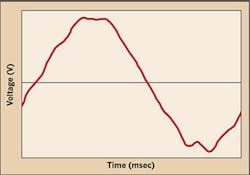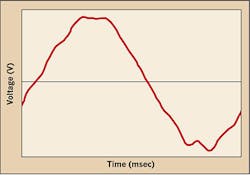How to Reduce Energy Waste Before You Spend Money on an Audit
Often, an energy audit gets delayed because it’s perceived as complicated. Or it’s delayed because to really do it right will cost more money than the budget allows. You may eventually need the highest ASHRAE level of energy audit to totally clamp down on energy waste, but you don’t need it to save energy right now. In fact, you can start saving energy without conducting an audit at all.
If you’ve done many energy audits, you can expect a short list of the same few items to be found in energy audits. If you know what these items are, then you can test for (and resolve) them at the pre-audit stage. Handling these before conducting an audit provides at least three advantages:
1) The results of the audit will be smaller and easier to deal with.
2) You can start saving energy right away.
3) You overcome management’s inertia.
Maybe you had the audit and have completed the punch list. Rather than undergo another audit to see what the first audit may have missed (or what wasn’t addressed correctly), you can look at these few things and probably solve any issues that still exist.
So what are those few things? Experts may disagree about the exact list, but generally you can expect to see the following:
• Grounding in place of bonding. This causes dangerous differences in potential and sets you up for circulating currents. It sets you up for energy-wasting power quality problems. Any time you have mysterious power quality issues, first make sure the system complies with Art. 250, Part V. That alone may fix the problem, ending the need for many hours of testing, troubleshooting, and head-scratching.
• Excess harmonics. A harmonics tester is a good investment. If you have excess harmonics, it means the equipment has to use more power to do the same work. One sign you may have excess harmonics is that thermograhic surveys show conductors to be hotter than they should be. That heat is wasted energy.
• Low power factor. Motors are inductive loads, and they shift the power vector off of center. To shift it back, you add capacitance. This solution is often overlooked because there are already power factor correction capacitors at the service. But power factor correction at the service doesn’t fix the low power factor problem at the motor. You need to correct at the motor. Motors with variable speed drives are a special case; don’t just add capacitors or you may destroy the drive. If the drive is not harmonics and power factor corrected, contact the manufacturer to see what can be done.
• High-resistance connections. These are just going to happen. The trick here is to find and fix them early in their deterioration phase. Regular thermographic surveys will find such connections if they are accessible. Inaccessible connections will require resistance measurements if a shutdown can be arranged or voltage (across each connection) if it can’t.
• Load imbalance. Not only do load imbalances waste energy, they significantly shorten the lives of motors. Ideally, you’ll have a power monitoring system, and it will be looking at some specific nodes (such as feeders/branch circuits to critical motors). Your PM procedures should call for supply voltage measurements, and provide the tolerance range (in volts) based on acceptable voltage imbalance.
• Unoccupied areas fully lit. It’s not so much that anyone needs an energy audit to reveal this problem; it's that management wants to pay for a facility’s energy savings work only after a formal audit. So even though everyone can see this problem, it doesn’t get addressed. But management is thinking in terms of the whole facility. So change the terms. The solution is to determine what lighting controls are needed for a given area and then write a specific proposal for that one area.
This last bullet point exemplifies a problem you could run into. Namely, management wants a complete picture so the energy savings projects can be properly prioritized with the limited funding available in the energy-savings project budget. That makes sense, so far as it goes. But during the delay, many of these projects would have already paid for themselves. Except for the last item in our list above, all of these can be cast as equipment availability or safety issues. The energy savings will be a bonus.
About the Author

Mark Lamendola
Mark is an expert in maintenance management, having racked up an impressive track record during his time working in the field. He also has extensive knowledge of, and practical expertise with, the National Electrical Code (NEC). Through his consulting business, he provides articles and training materials on electrical topics, specializing in making difficult subjects easy to understand and focusing on the practical aspects of electrical work.
Prior to starting his own business, Mark served as the Technical Editor on EC&M for six years, worked three years in nuclear maintenance, six years as a contract project engineer/project manager, three years as a systems engineer, and three years in plant maintenance management.
Mark earned an AAS degree from Rock Valley College, a BSEET from Columbia Pacific University, and an MBA from Lake Erie College. He’s also completed several related certifications over the years and even was formerly licensed as a Master Electrician. He is a Senior Member of the IEEE and past Chairman of the Kansas City Chapters of both the IEEE and the IEEE Computer Society. Mark also served as the program director for, a board member of, and webmaster of, the Midwest Chapter of the 7x24 Exchange. He has also held memberships with the following organizations: NETA, NFPA, International Association of Webmasters, and Institute of Certified Professional Managers.

